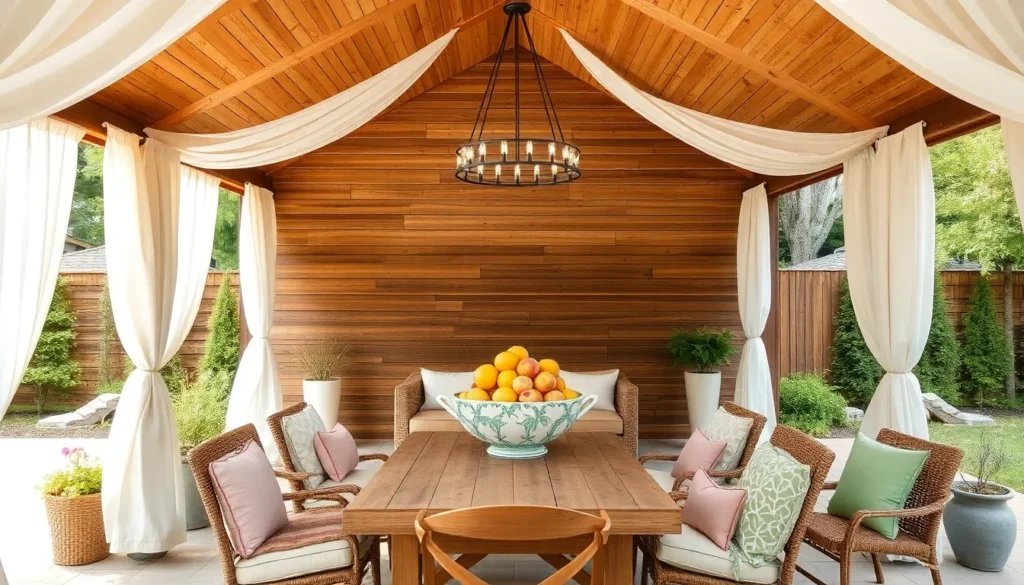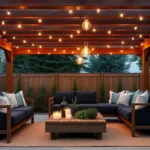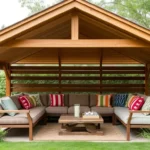Summer is the perfect time to transform your outdoor space into a personal oasis, and what better way to enhance your patio than with a stylish and functional shelter? Whether you’re a beginner dreaming of al fresco dinners under a cozy canopy or a seasoned homeowner ready to revamp your backyard, our guide, “14 Inspiring Patio Shelter Ideas for Summer,” is tailored just for you. With our curated list, you’ll discover the perfect blend of creativity and practicality to elevate your patio experience.
Dive into a world of possibilities where comfort meets style, and learn how to create a space that shields you from the sun while adding a touch of elegance to your home. From simple DIY solutions to sophisticated designs, each idea promises to boost your outdoor living game, ensuring you enjoy the warm months in style. Let this guide be your trusted companion in creating an inviting retreat that reflects your unique taste and enhances your summer living.
Install Retractable Awning Systems
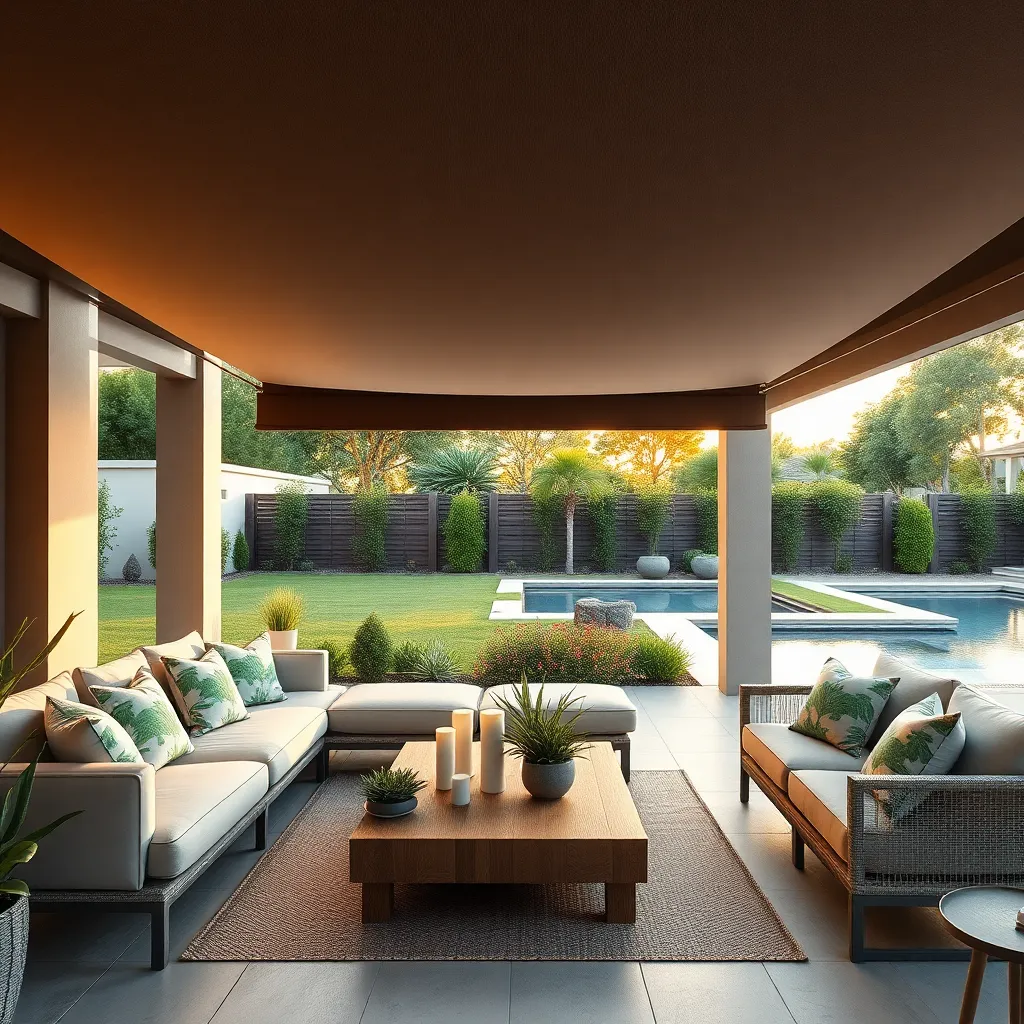
Consider installing a retractable awning system to add versatility and comfort to your patio space. These systems offer the flexibility of providing shade when you need it and retracting for full sun exposure when desired. Choose materials like durable, weather-resistant fabrics such as acrylic or polyester, which can withstand various weather conditions. For beginners, starting with a manual system might be more manageable, while seasoned DIYers could explore motorized options for ease of use.
When selecting an awning, consider factors such as the size of your patio and the angle of sunlight throughout the day. Opt for awnings that extend at least 10-13 feet to ensure adequate coverage. For a cohesive look, match the awning’s color or pattern with other outdoor elements like furniture cushions or garden accents. Advanced users might explore integrating wind or sun sensors to automatically adjust the awning, providing an effortless blend of convenience and style.
Incorporate Natural Bamboo Screens
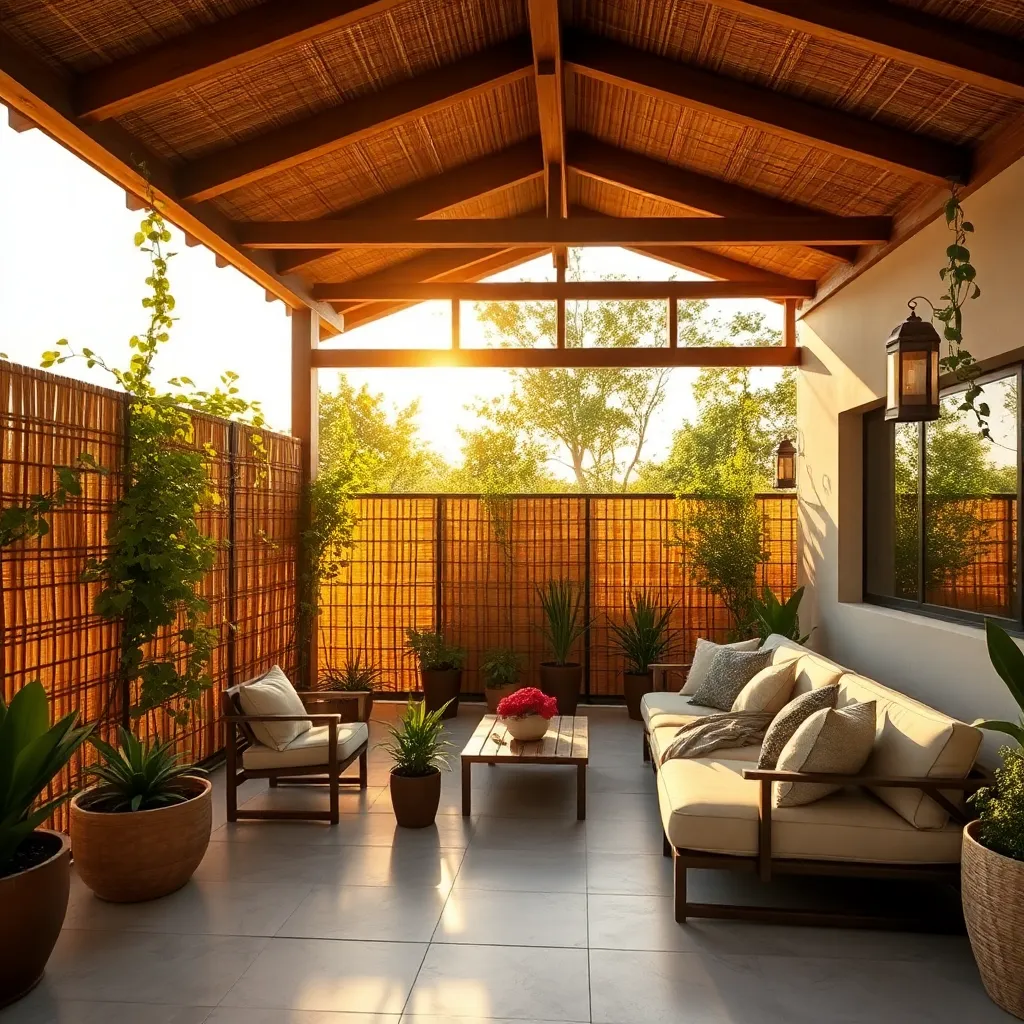
Natural bamboo screens offer a stylish and effective way to create privacy and shade on your patio. Opt for tightly woven panels to ensure maximum sun protection while allowing a gentle breeze to pass through. Bamboo is known for its durability and eco-friendliness, making it an excellent choice for sustainable outdoor design. Beginners can start with pre-assembled bamboo panels, which are easy to install using basic tools and hardware.
For a more customized look, consider creating a frame with treated wood or metal, attaching individual bamboo rods for a unique, textured effect. Advanced DIYers can experiment with different patterns or layering techniques to enhance visual interest. When planning your layout, remember that bamboo screens work well as both standalone partitions or integrated into existing structures, like pergolas. Regular maintenance, such as applying a weather-resistant sealant, will prolong the life of your bamboo screens, keeping them looking fresh and vibrant year-round.
Add a Stylish Pergola Cover
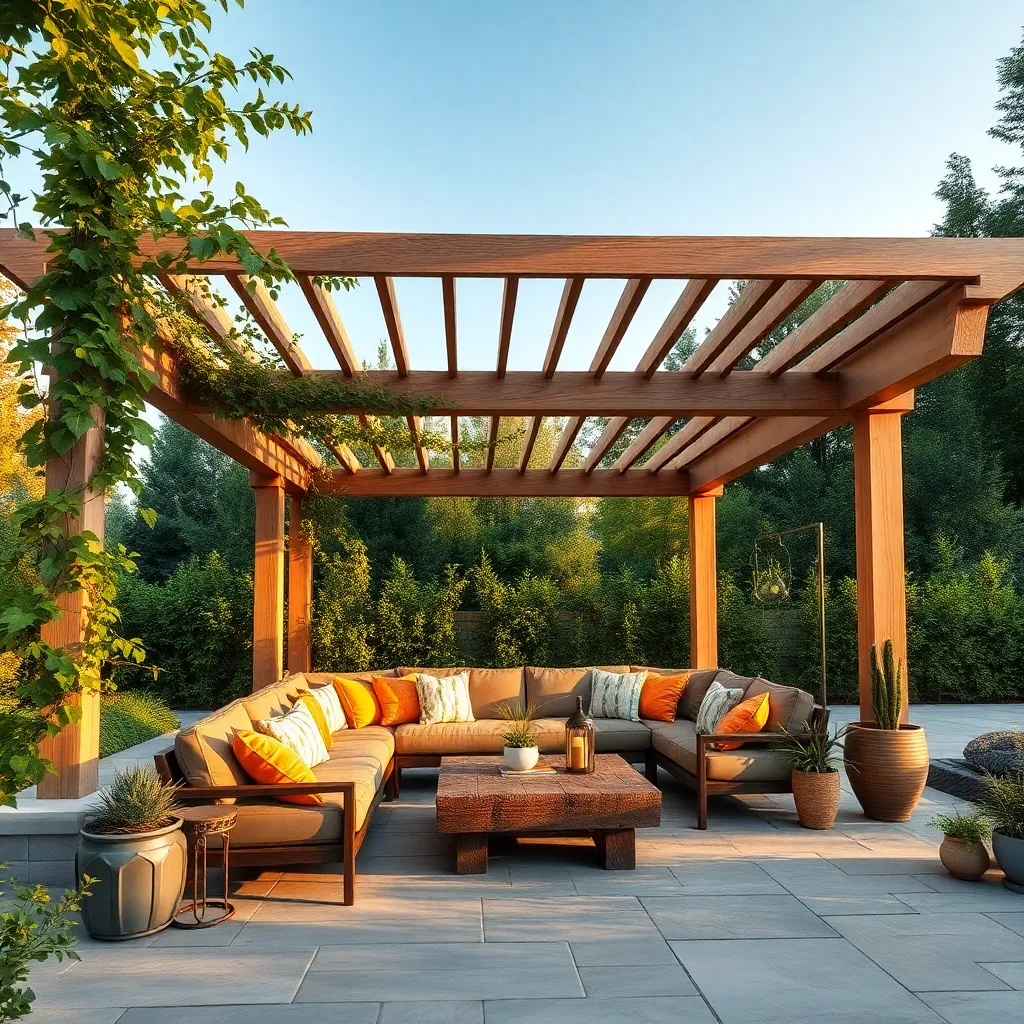
Transform your patio with a stylish pergola cover that combines form and function. For a basic setup, consider using weather-resistant materials like treated wood or aluminum for durability. Ensure the pergola is at least 8-10 feet high to create an open, airy feel, and opt for a neutral color palette that complements your existing outdoor decor. Beginners can start with a simple design, adding climbing plants such as wisteria or grapevines to enhance the natural beauty over time.
Experienced DIYers might explore advanced options like retractable canopy systems for adjustable shade. Consider using UV-resistant fabric for the canopy to protect against harsh sun rays while adding a touch of elegance. Integrate built-in lighting or hanging lanterns to extend your patio use into the evening, creating a cozy ambiance. Remember, the key to a successful pergola cover is balancing aesthetics with practicality, ensuring your outdoor space is both inviting and functional.
Hang Outdoor Shade Sails
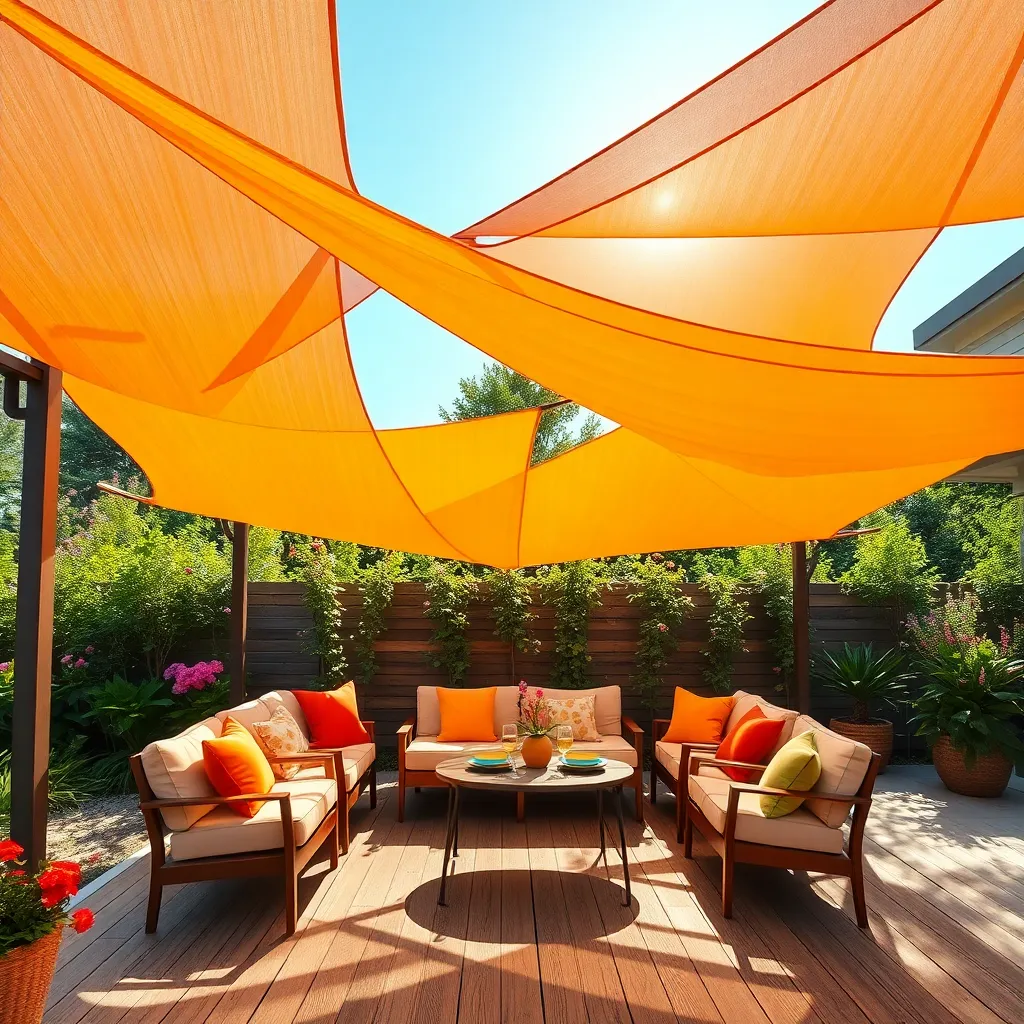
Transform your patio with the addition of outdoor shade sails, a versatile and stylish way to stay cool this summer. Choose a durable material like UV-stabilized polyethylene, which provides excellent sun protection and withstands harsh weather conditions. Consider geometric designs—triangular or square shapes—to create a modern look that complements the existing aesthetics of your outdoor space.
To ensure a secure installation, use stainless steel hardware and attach the sails to fixed points like trees, posts, or walls. Install the sails at an angle to allow rainwater to run off, preventing water pooling and prolonging the life of the fabric. For an advanced touch, mix and match different colors or layer sails to create dynamic patterns and varying levels of shade, enhancing both functionality and visual appeal.
Use Waterproof Fabric Curtains

Transform your patio into a cozy retreat by using waterproof fabric curtains to create a versatile and stylish shelter. These curtains are perfect for blocking out harsh sunlight, providing privacy, and adding a touch of elegance to your outdoor space. Choose durable materials like polyester or acrylic, which offer excellent resistance to moisture and fading. For beginners, installing a simple curtain rod or tension wire can make hanging these curtains a breeze, while experienced DIYers might explore motorized options for added convenience.
To enhance the aesthetic appeal, select colors and patterns that complement your outdoor decor. Consider using curtain panels in varying lengths to add dimension and create a layered look. Ensure the curtains are easy to draw and secure by using tiebacks or magnetic closures, allowing you to adjust them according to the weather or your mood. For those looking to elevate their design, integrate LED lights along the curtain rods or hems for a magical glow in the evening. This approach not only beautifies your space but also makes it functional and inviting throughout the summer.
Position Freestanding Umbrellas Strategically

Incorporating freestanding umbrellas into your patio design can provide flexible and stylish shade solutions. To maximize their effectiveness, position them strategically based on how the sun moves across your outdoor space throughout the day. Consider selecting umbrellas with adjustable tilt features to allow easy adaptation to changing sun angles. For a practical starting point, place umbrellas near seating areas or dining tables where shade is needed most, ensuring they are securely anchored with weighted bases for stability.
For a more advanced setup, consider grouping multiple umbrellas to create a cohesive look that offers extensive coverage. Opt for materials like UV-resistant fabric and rust-proof aluminum frames to enhance durability and longevity. Experiment with colors and patterns to complement your existing outdoor décor, and remember that lighter shades can help reflect sunlight, keeping areas cooler. Whether you’re a beginner or an experienced gardener, these strategic placements can transform your patio into a more comfortable and inviting retreat.
Create Shade With Plant Vines
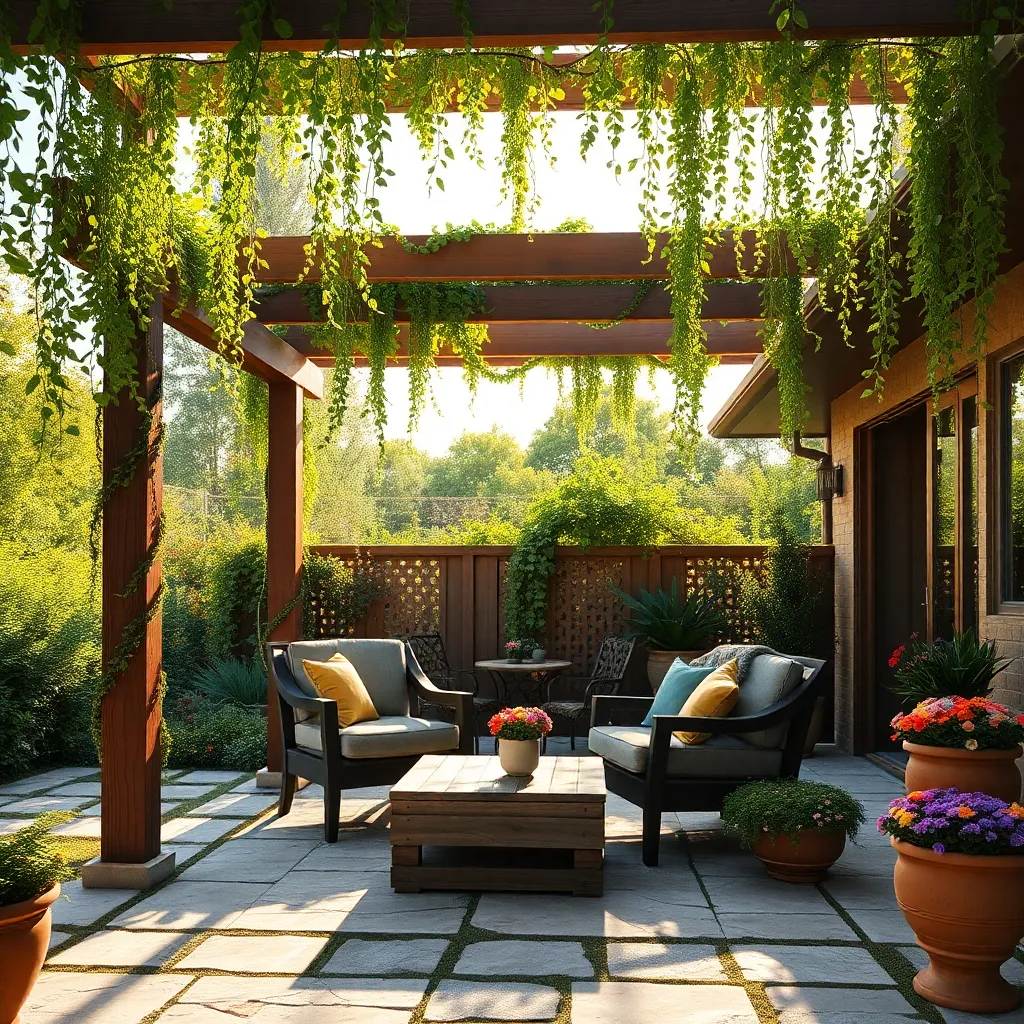
For a natural and aesthetically pleasing way to create shade on your patio, consider using plant vines. Start by selecting sturdy, fast-growing varieties like Virginia Creeper or Wisteria, which can provide ample coverage over time. To get started, you’ll need a durable trellis or pergola structure; use materials such as cedar or metal for longevity and visual appeal. Position your structure strategically so that the vines receive ample sunlight while providing shade where you need it most.
Once your structure is in place, plant the vines at the base, ensuring they are spaced according to the specific plant’s growth habits—usually about 3 to 4 feet apart. For beginners, focus on providing consistent watering and regular pruning to guide the vines as they grow. Advanced gardeners might experiment with intertwining multiple vine species for enhanced visual interest and a denser canopy. With time, your vine-covered shelter will become a living, breathing retreat from the summer sun, blending beauty with functionality.
Build a Timber Gazebo Structure
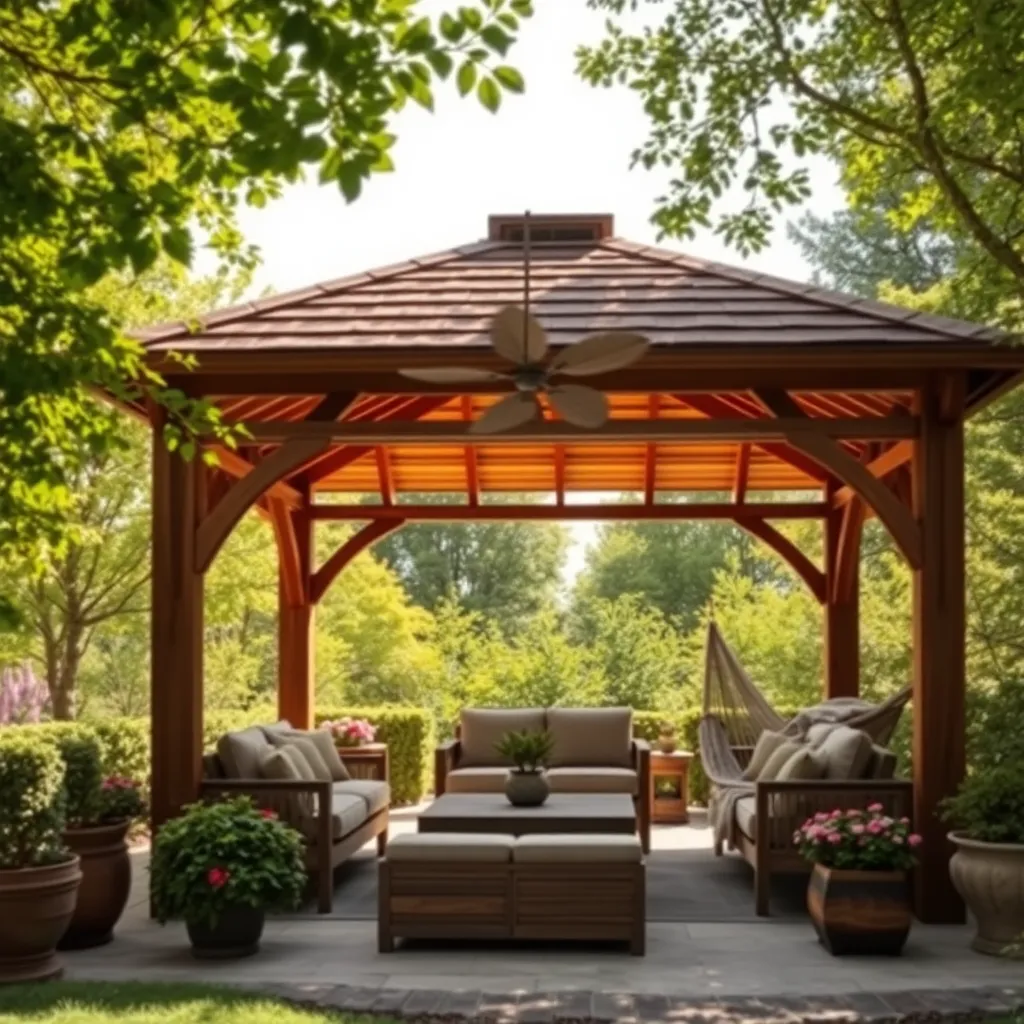
To build a timber gazebo, start by selecting durable wood such as cedar or redwood, known for their resilience against the elements. Ensure your gazebo design includes a solid foundation—consider using concrete footings for stability. Measure and cut timber beams accurately to form the base, posts, and roofing framework. For a beginner-friendly approach, use pre-cut kits available at home improvement stores, which come with step-by-step instructions.
Incorporate design elements like lattice sides or curved beams to enhance the gazebo’s aesthetic appeal. For added durability, apply a weather-resistant sealant to the wood, protecting it from moisture and UV damage. Consider adding a slatted or solid roof to provide ample shade and shelter from unexpected summer showers. Advanced builders might integrate electricity for lighting or fans, creating a cozy outdoor retreat. Remember, a well-constructed timber gazebo not only adds value to your home but also creates a serene outdoor space to enjoy all summer long.
Opt for Adjustable Louvered Roofs
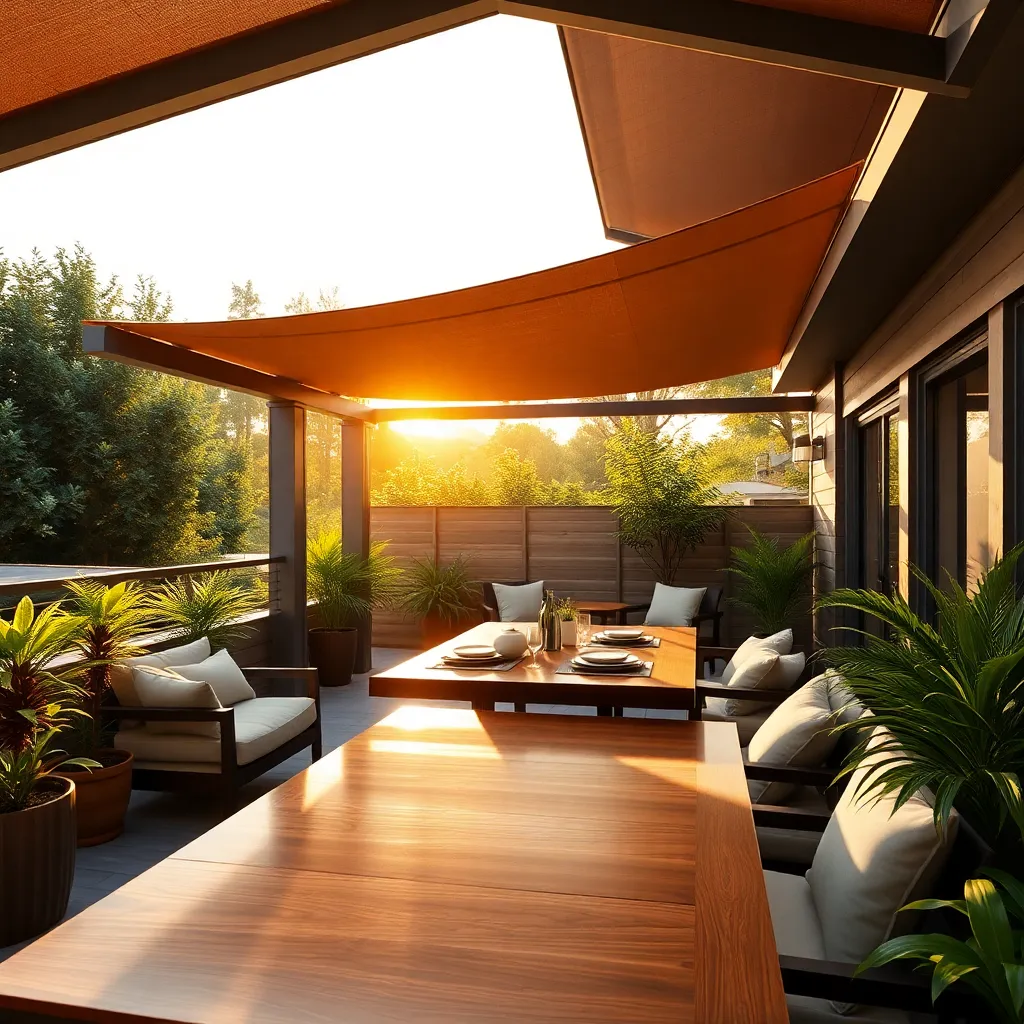
For an adaptable and modern patio cover, consider installing an adjustable louvered roof. These systems allow you to control the amount of sunlight and ventilation by adjusting the angle of the louvers, offering flexibility throughout the day. Materials like powder-coated aluminum or galvanized steel are durable and low-maintenance, perfect for withstanding the elements. Beginners should opt for pre-fabricated kits that simplify installation, while more experienced DIYers can explore custom options for a tailored fit.
Enhance your outdoor space by integrating features like motorized controls or weather sensors that automatically adjust the louvers. Consider a roof with a built-in gutter system to manage rainwater effectively, keeping your patio dry during unexpected showers. For those looking to add a bit of luxury, choose models with LED lighting or fans to create a comfortable ambiance day or night. Remember, ensuring your louvered roof matches your patio’s dimensions is crucial for both functionality and aesthetics.
Design with Transparent Polycarbonate Panels
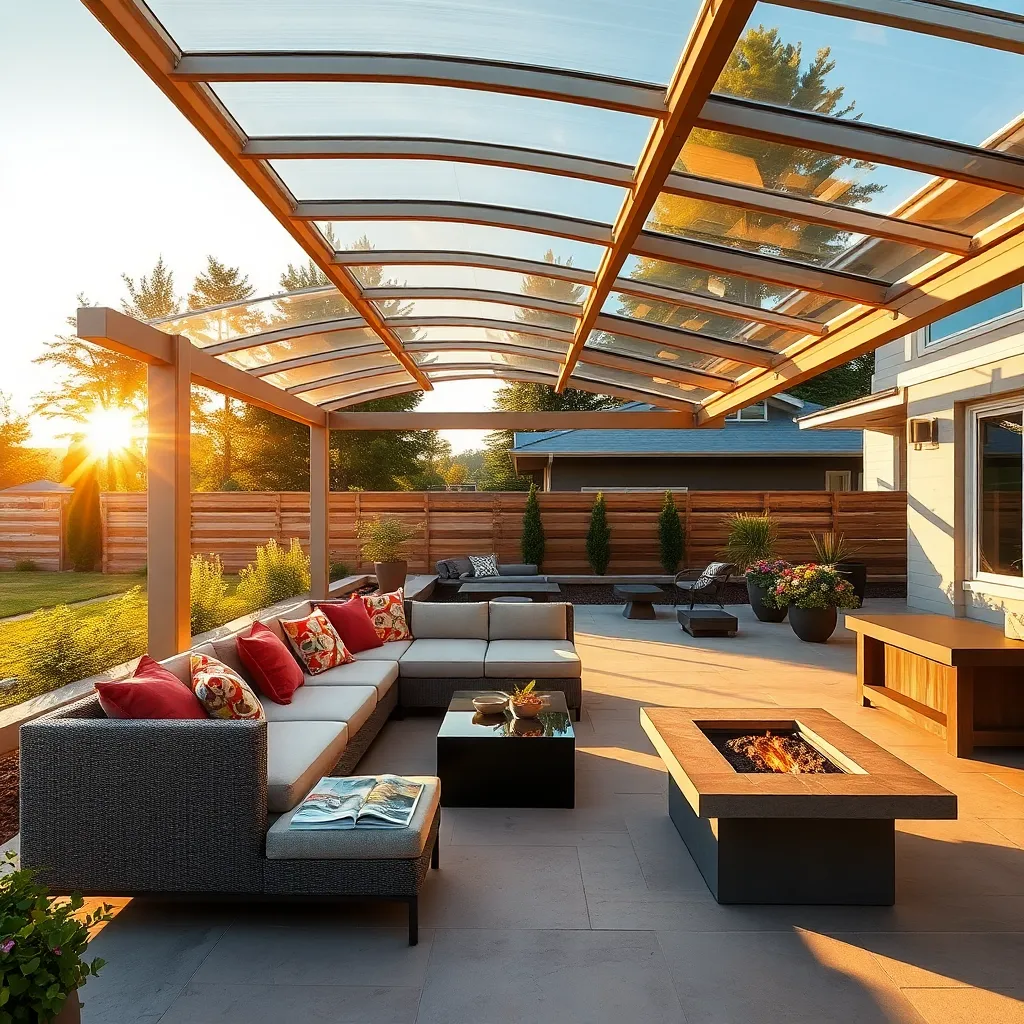
Using transparent polycarbonate panels in your patio design allows you to enjoy the beauty of natural light while maintaining protection from the elements. These panels are lightweight yet durable, making them easy to install without sacrificing strength. For a basic setup, consider a simple frame of treated wood or metal to provide a solid foundation. This approach not only enhances the aesthetic appeal but also offers UV protection, ensuring a comfortable space throughout the summer.
For those looking to add a touch of sophistication, consider opting for panels with a slight tint or texture to reduce glare and increase privacy. Incorporating additional features like a gutter system can help manage rainwater effectively, protecting your patio from water damage. Ensure panels are cut to precise dimensions to fit snugly within the frame, preventing any gaps that could compromise the shelter’s integrity. Whether you’re a beginner or a seasoned DIY enthusiast, this design choice offers a versatile and practical solution for any outdoor setting.
Employ Portable Canopy Tents
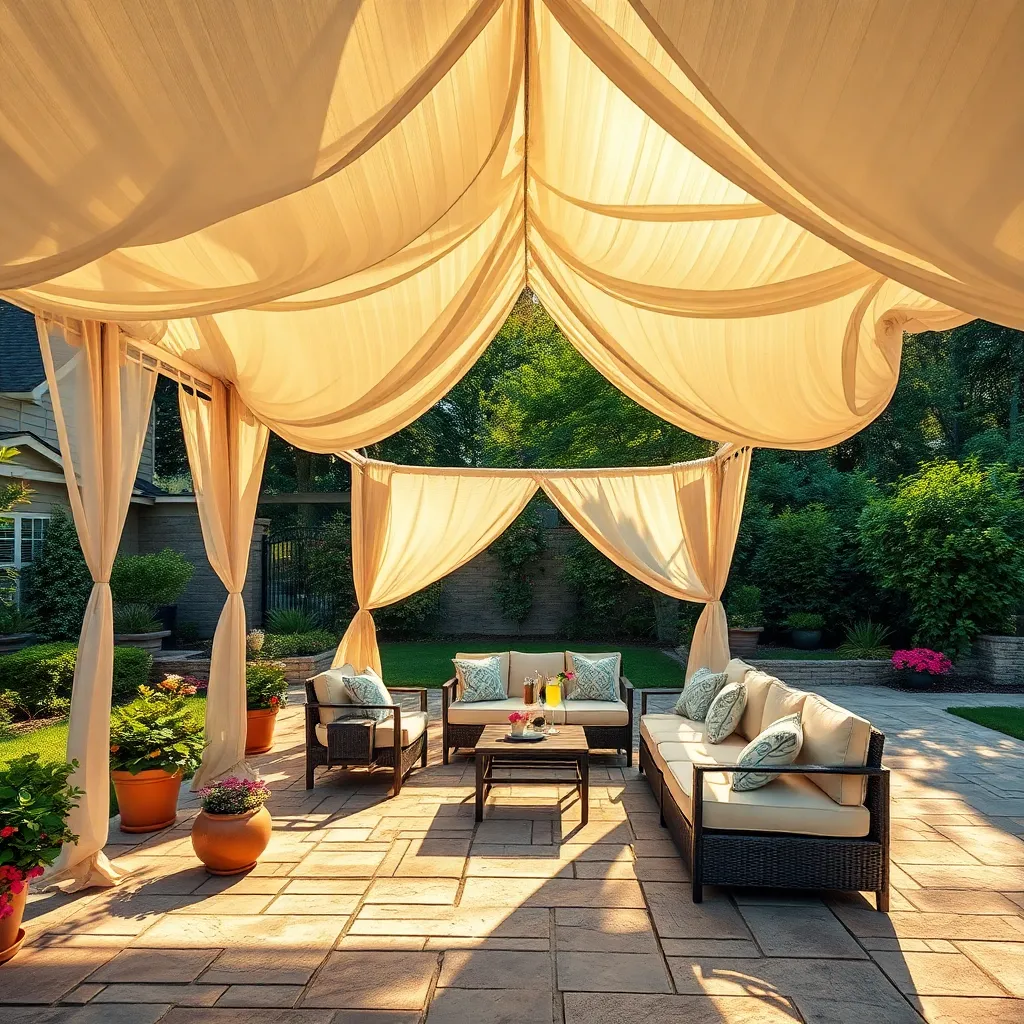
Portable canopy tents offer a flexible and cost-effective solution for creating shade on your patio. These tents are typically made with durable, weather-resistant materials like polyester or polyethylene, ensuring they withstand summer showers and intense sun. For those new to outdoor design, look for a tent with a **pop-up mechanism** for quick assembly and takedown. Ensure you select a model with adjustable legs to accommodate uneven surfaces, enhancing stability and usability in various yard spaces.
For more experienced DIY enthusiasts, consider adding **custom touches** like string lights or fabric drapes to enhance your canopy’s aesthetic appeal. Advanced users might opt for larger canopies with sidewalls for added privacy and protection from wind. When choosing a canopy, prioritize UV protection ratings and select a size that offers ample coverage for your patio furniture. Remember, the key to incorporating a portable canopy tent successfully is ensuring it complements your existing outdoor design while meeting your functional needs.
Craft a DIY Pallet Shelter
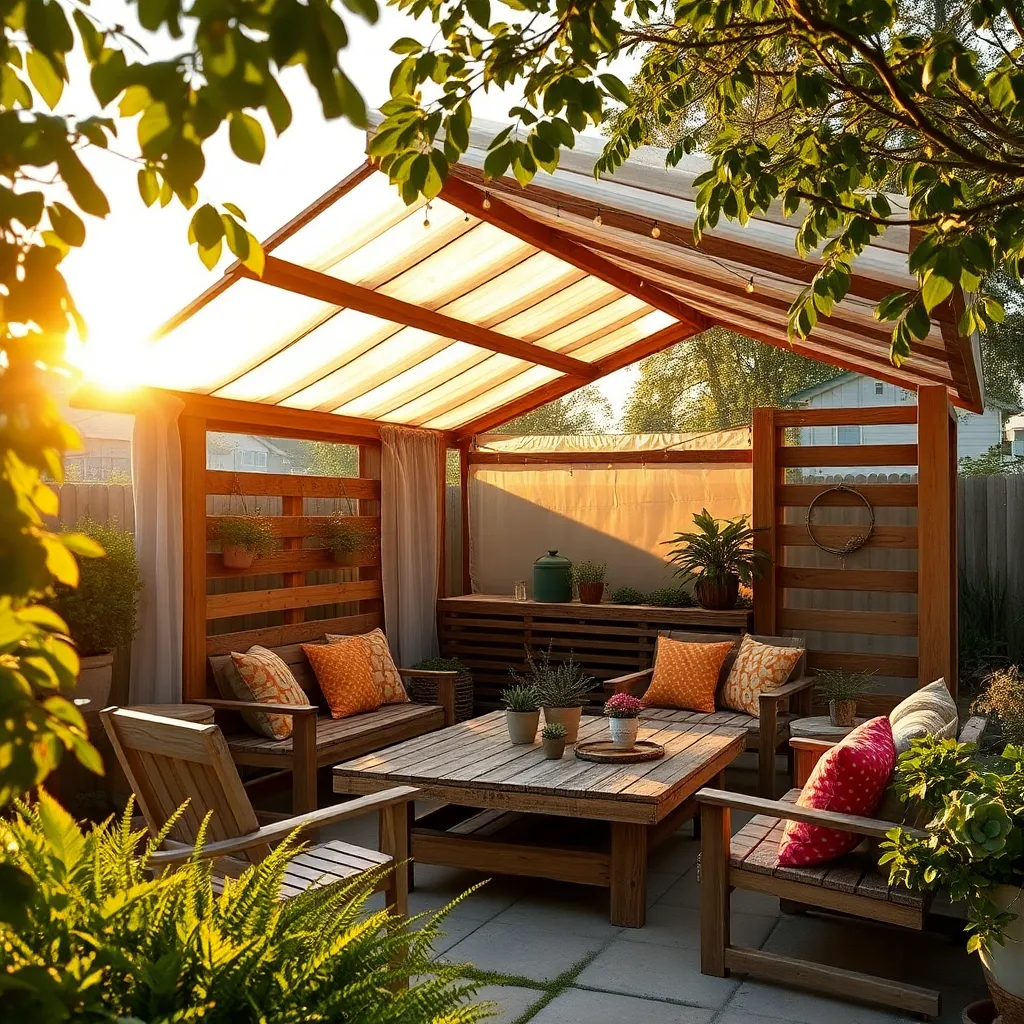
Building a DIY pallet shelter can be both an economical and rewarding project for your patio. Start by sourcing sturdy, heat-treated pallets from local businesses or online marketplaces. Arrange them to create a simple frame, ensuring it’s stable by using long screws and brackets at the joints. For a roof, consider using corrugated metal or polycarbonate panels to provide effective protection from the sun and rain. Beginners should focus on a basic rectangular design, while those with more experience can experiment with adding a slanted roof for better water runoff.
Enhance your pallet shelter by incorporating thoughtful design elements to make it a cozy retreat. Sand and seal the pallets to prevent splinters and extend their lifespan. Add decorative touches like string lights or hanging plants to create a welcoming atmosphere. For a more advanced touch, include a retractable fabric shade or an outdoor curtain for adjustable privacy and sun control. Remember, the key to a successful DIY project is planning and patience, so take your time to ensure each step is done correctly for a durable and stylish outdoor space.
Integrate Solar-Powered Shade Solutions

Embrace the power of the sun by integrating solar-powered shade solutions into your patio design. Solar canopies not only provide relief from the heat but also harness energy to power lights or small appliances. For a beginner-friendly setup, consider investing in a pre-fabricated solar shade kit, which typically includes solar panels, a battery pack, and LED lighting. These kits are simple to assemble and can often be adjusted to fit various patio sizes, making them highly versatile. For a more advanced project, you might build a custom pergola with integrated solar panels on the roof, which can be used to power outdoor string lights or even charge your devices while you relax in the shade.
Choosing the right materials is crucial for both aesthetic appeal and functionality. Opt for durable, weather-resistant materials such as aluminum or treated wood for the framework to withstand the elements. To maximize the efficiency of your solar panels, position them at an angle that captures the most sunlight throughout the day. Advanced users can enhance their system by installing an inverter, allowing you to convert solar energy to power larger appliances like ceiling fans.
- Ensure your solar panels are regularly cleaned to maintain peak performance.
- Consider adding a weatherproof battery storage box to protect your system.
By thoughtfully incorporating solar-powered elements, you can create a sustainable and comfortable outdoor retreat that saves on energy costs.
Enhance Privacy with Lattice Walls
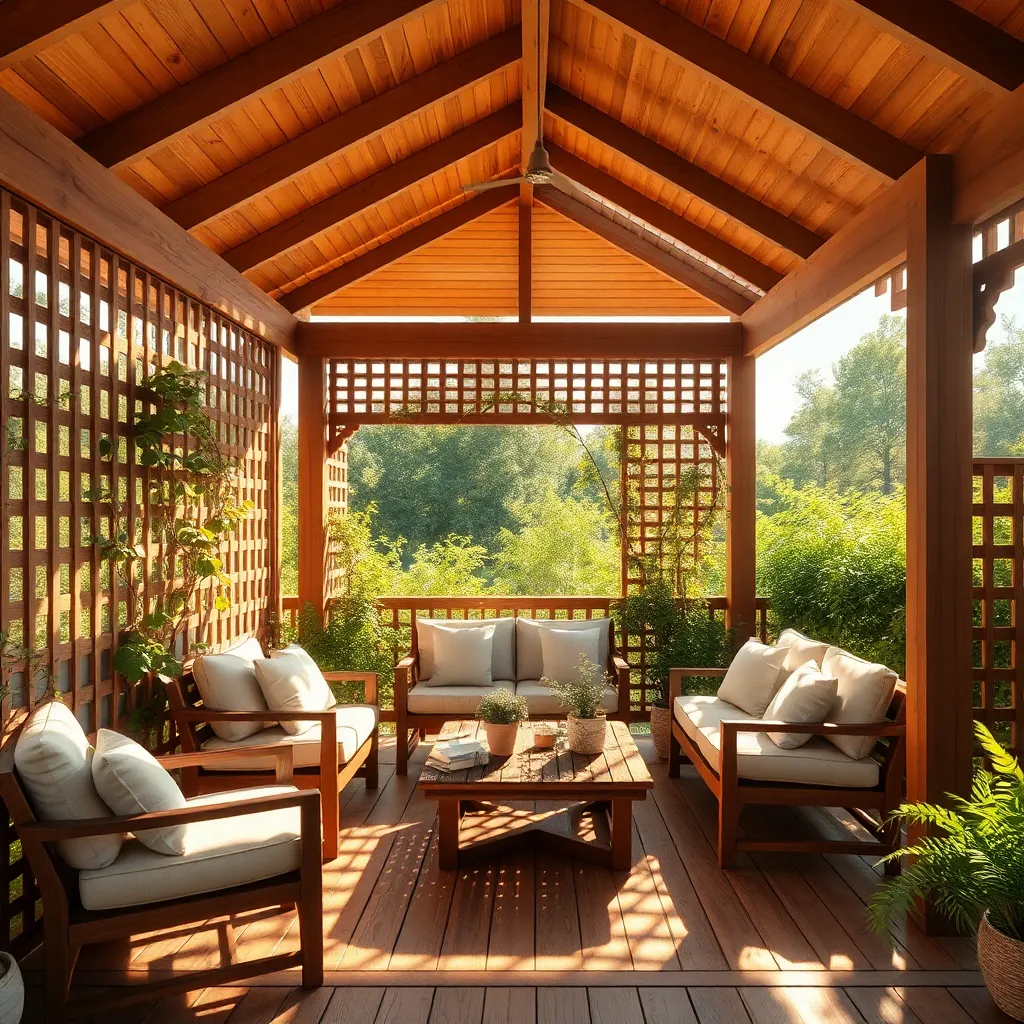
Transform your patio into a secluded haven by installing lattice walls, which offer both privacy and a touch of elegance. Lattice panels can be made from materials like wood, vinyl, or metal, depending on your aesthetic preference and budget. For beginners, wooden lattice is a popular choice due to its ease of installation and natural look. Ensure panels are at least six feet tall to effectively block views while allowing air and light to pass through, creating a cozy yet open atmosphere.
For those looking to enhance their lattice walls, consider incorporating climbing plants such as clematis or jasmine to add color and fragrance. Advanced gardeners might train these plants to weave through the lattice for a lush, green backdrop. To secure the lattice, use sturdy posts or attach them to existing structures like pergolas or fences. This method not only boosts stability but also integrates the lattice seamlessly into your outdoor space, enhancing both privacy and style.
Conclusion: Creating Beautiful Outdoor Spaces
In exploring ’14 Inspiring Patio Shelter Ideas for Summer,’ we’ve journeyed through a variety of creative concepts designed to enhance not just your outdoor space, but also the relationships you nurture within it. From the intimacy fostered under a romantic pergola to the lively gatherings made possible by a versatile retractable awning, each idea serves as a metaphor for the nurturing and protection required in our relationships. We’ve highlighted the importance of adaptability, the value of stability, and the joy found in shared experiences.
Your next step is simple: choose one idea that resonates with you and plan a gathering or quiet moment with a loved one under your newly inspired patio shelter. This small action could be the catalyst for deeper connections and cherished memories.
Remember, relationships thrive on thoughtful gestures and shared spaces. For ongoing inspiration and practical tips, save or bookmark this article. It will serve as your guide to creating a nurturing environment that fosters lasting bonds.
As you implement these ideas, know that each step brings you closer to the relationship success you desire. With intention and creativity, your relationships can flourish as beautifully as your summer garden.

